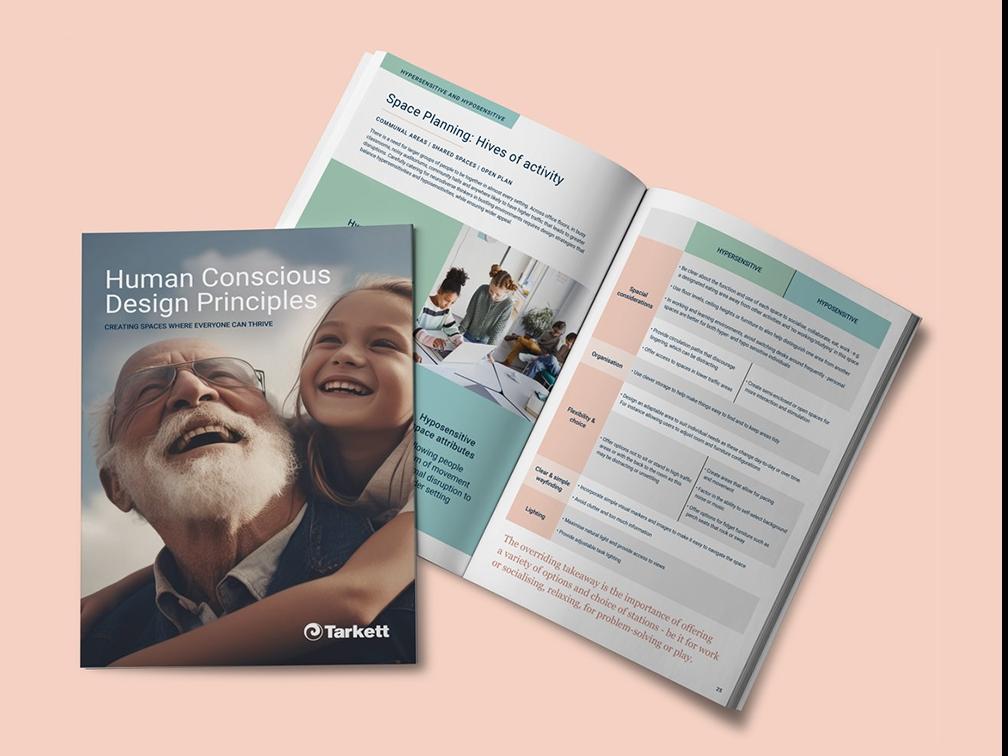There is growing recognition that we all perceive the world differently and that to thrive, we need to create spaces that meet everyone’s needs. However, the concept of ‘inclusive design’ often conjures up a notion of compromise that curbs creativity and leads to uninspiring solutions and spaces.
A new guide from Tarkett ‘Human Conscious Design Principles’ is tackling this misconception and argues that designing with specific needs in mind can, in fact, unlock creativity. That, by interrogating the different ways in which we experience and interpret our surroundings, designers are encouraged to explore new ideas and solutions that they may not otherwise have considered.
The guide explores the world through the lens of neurodiversity with a particular focus around ADHD, autism and dementia. It is estimated that one in seven people are ‘neurodivergent’ and that a staggering 50 million[1] people are living with dementia worldwide, a figure that is expected to triple by 2050[2].
Shaz Hawkins, Segment Marketing Manager UK&IE, comments: “Inclusive design has always been at the heart of Tarkett and we’re continually investing in user research and product development to understand how our different human make-up affects us as we go through life. As one of the leading manufacturers in floor and wall surfaces, we need to ensure that the products we develop are not just technically fit for purpose but support the well-being of the individuals utilising the space, whether that be a school, a hospital, an office, or a home.”
“This new practical guide gives a voice to individuals with lived experience across ADHD, autism, and dementia highlighting some of the challenges they are facing day-to-day. We hope that it will help designers and end users learn, explore, and incorporate new ideas to create more interesting, inspiring, and supportive spaces for everyone.”
With an overview of each condition, Human Conscious Design Principles outlines key design considerations across education, the workplace, and eldercare.
It offers great insight into how our senses can get in the way of our health and wellbeing if the environment isn’t calibrated correctly. How certain smells, sounds, colours, patterns, and lighting can create discomfort for anyone, but even more so when dementia or sensory challenges are part of our make-up.
To obtain a copy of the guide email [email protected].
[1] World Health Organisation, 23rd March 2023
[2] The Global Burden of Disease study published in the Lancet Medical Journal 6th of January 2022
